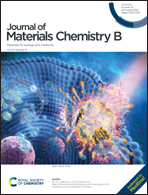Microphysiological systems for the modeling of wound healing and evaluation of pro-healing therapies
Abstract
Wound healing is a multivariate process involving the coordinated response of numerous proteins and cell types. Accordingly, biomedical research has seen an increased adoption of the use of in vitro wound healing assays with complexity beyond that offered by traditional well-plate constructs. These microphysiological systems (MPS) seek to recapitulate one or more physiological features of the in vivo microenvironment, while retaining the analytical capacity of more reductionist assays. Design efforts to achieve relevant wound healing physiology include the use of dynamic perfusion over static culture, the incorporation of multiple cell types, the arrangement of cells in three dimensions, the addition of biomechanically and biochemically relevant hydrogels, and combinations thereof. This review provides a brief overview of the wound healing process and in vivo assays, and we critically review the current state of MPS and supporting technologies for modelling and studying wound healing. We distinguish between MPS that seek to inform a particular phase of wound healing, and constructs that have the potential to inform multiple phases of wound healing. This distinction is a product of whether analysis of a particular process is prioritized, or a particular physiology is prioritized, during design. Material selection is emphasized throughout, and relevant fabrication techniques discussed.

- This article is part of the themed collections: Editor’s Choice: Microfluidics and Responsive Materials for Healthcare Diagnostics


 Please wait while we load your content...
Please wait while we load your content...